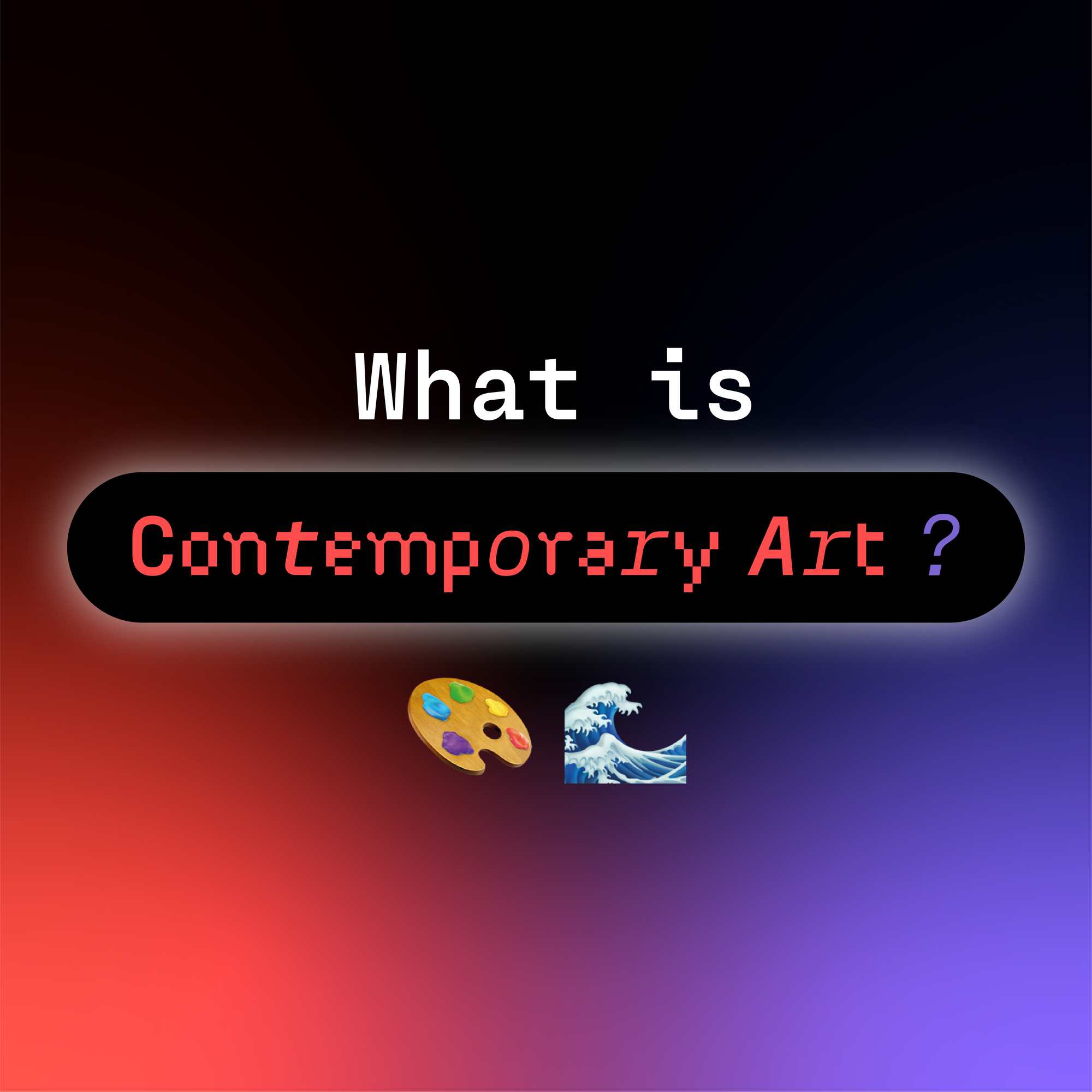What is Contemporary Art?
By Terrain.art | Jan 27 2022 · 4 min read
A dynamic combination of various artistic styles, methodologies and concepts, contemporary art is one of the most influential art movements of our present times.
While all art is contemporary in its own time, we use it to refer to the period from the 1970s onwards, following the end of modernism. Contemporary artists define themselves as a group of free-style art practitioners, responding to contemporary socio-political changes, and making use of current and emerging technologies. Here we look at some of the key artistic movements and trends that are associated with the term contemporary art.
History of Contemporary Art
The root of contemporary art lies in the modernist tradition itself. If modern art was all about challenging the Classical notions of representation, contemporary art challenges the notion of artwork itself. After the Second World War, artists like Andy Warhol and others began to find new and creative ways to express themselves artistically. New movements and styles that developed during this time included pop art, conceptualism, video art, photorealism,and digital art, just to name a few. Here’s a look at some of the styles that developed during this period.
Pop Art
Pop art was characterized by an interest in mass culture and a reinvention of commercial products as accessible art. Mostly associated with artists such as Andy Warhol and Roy Lichtenstein, this form of art made its colourful debut in the 1950s and remained in vogue roughly till the 1970s. Some of the colourful masterpieces that have come to define pop art include Andy Warhol’s 32 Soup Cans (1962), Roy Lichtenstein’s Whaam! (1963) and Keith Haring’s Ignorance = Fear (1989).
Conceptual Art
This form of art rejected the notion of art as a commodity. It highlights the concept behind the art rather than what is seen. Conceptualism has been a major inspirational force behind several contemporary artists and continues to be a major art movement even today. Artists such as Ai Wei Wei, Damien Hirst, Robert Montgomery, Zhang Huan, etc. are some of the most influential contemporary conceptual artists of our times.
Installation Art
Installation art gives an immersive experience to audiences. This art incorporates three-dimensional objects that transform their surroundings and alter the perception of the space. Most installation artworks are large-scale, site-specific objects. Many are more about the idea that they represent, like conceptual art. Sometimes, installation art can take the form of public art, showcased at some of the major street corners of the world. Some of the most well-known installation artists of our times include Subodh Gupta, Yayoi Kusama, Dale Chihuly, and Bruce Munro.
Performance Art
Closely tied to conceptual art is performance art, in which the artist uses the living body as an artistic material to convey a message. An artist may or may not be the performer in their performance works. It’s important to note that the intention behind a performance art (unlike a commercial performance) is not entertainment. Performance art can sometimes be deeply political and can be loaded with symbolism. Marina Abramovic, Yoko Ono, Zhang Huan, Adrian Piper, Meredith Monk, Dan Graham, and Laurie Anderson are some of the top performance artists of all time.
Digital Art
While all physical artworks can be represented or reproduced digitally, not all artworks can be called digital. Only those artworks that predominantly use digital technology as an artistic medium as a part of the creative process or presentation can be called digital art. A related artistic genre is NFT art or crypto art. This genre recently took off as NFT transactions through the means of blockchain technology became popular. Some of the top NFT artists include Beeple, Kevin Abosch, etc.
You can read all about NFT artworks and how to buy one here.

